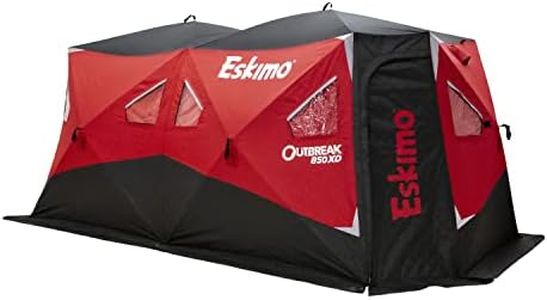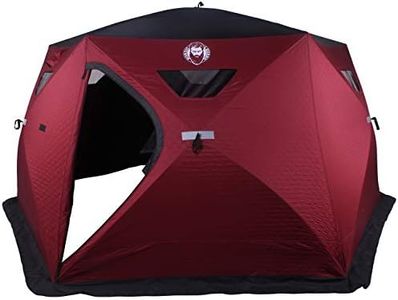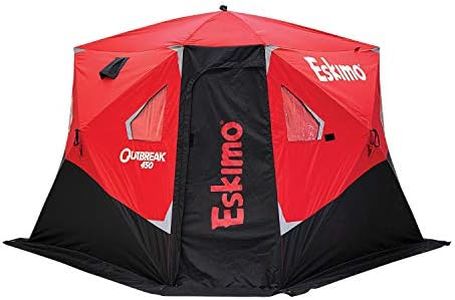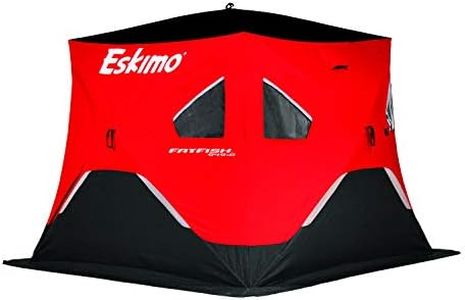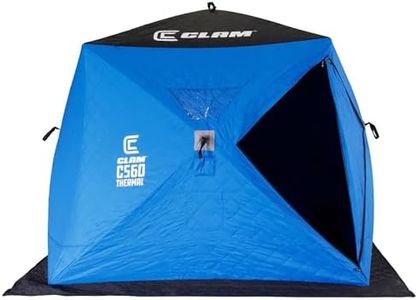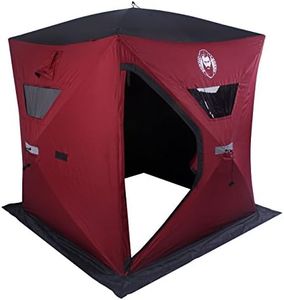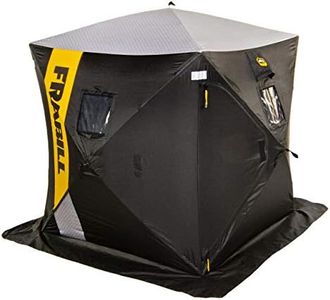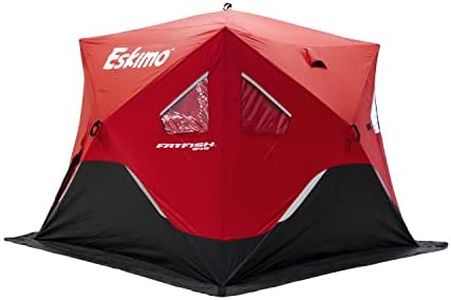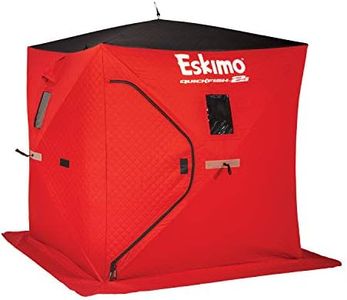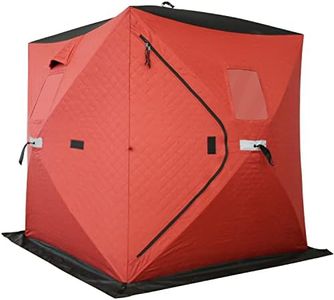We Use CookiesWe use cookies to enhance the security, performance,
functionality and for analytical and promotional activities. By continuing to browse this site you
are agreeing to our privacy policy
10 Best Ice Fishing Shelters
From leading brands and best sellers available on the web.Buying Guide for the Best Ice Fishing Shelters
Choosing the right ice fishing shelter can make a big difference in your comfort and success when out on the ice. Before you buy, think about how many people you typically fish with, how often you’ll use it, how far you’ll need to carry it, and what weather conditions you expect. A good shelter will protect you from wind, snow, and cold, while also making your time on the ice more enjoyable and productive. Consider what’s most important to you—space, portability, warmth, or setup speed—and let that guide your decision.CapacityCapacity refers to the number of people the shelter is designed to hold comfortably. This is important because you want enough space for everyone and their gear, but not so much that it becomes difficult to heat or transport. When looking at shelter capacity, you’ll find them typically labeled for 1-2 people (small, easy to carry), 3-4 people (mid-sized, balance of space and portability), and 5 or more (large, best for groups or lots of gear but heavier and bulkier). Consider how many people usually go with you; if you fish solo or with one friend, a smaller shelter is easier to manage. If you often go in groups, opt for something roomier.
PortabilityPortability is about how easy the shelter is to move and set up. This is especially important if you plan to walk long distances or move around frequently to find the best fishing spots. Shelters made with lightweight materials, compact designs, and integrated sleds are easier to transport. There are pop-up shelters (quick to set up, generally lighter, pack into carry bags) and flip-over shelters (mounted on a sled, can haul gear but generally heavier). If you mostly stay in one spot, heavy portability may not matter much, but if you roam the ice, go for lightweight and compact options.
InsulationInsulation refers to how well the shelter keeps warmth inside and blocks out the cold. Non-insulated shelters are lighter but can get chilly, making them good for quick trips or mild conditions. Insulated (also called thermal) shelters trap heat much better, are heavier, but are far more comfortable in extreme cold or during longer outings. If you fish in frigid temperatures or spend long hours on the ice, insulation should be a priority.
Setup MechanismThe setup mechanism is how the shelter is assembled or deployed. Pop-up or hub-style shelters use a pull or push system for quick setup, often by one person; these are great for fast sheltering but can be harder to anchor in high wind. Flip-over shelters are attached to a sled and simply flip open, making them ultra-fast and convenient but typically heavier. Cabin-style shelters require more assembly, offering solid walls and more comfort but take longer to set up. Think about how much time and effort you want to spend setting up your shelter, especially in cold weather, and pick accordingly.
Ventilation and WindowsVentilation and windows ensure fresh air inside the shelter and allow you to control light and visibility. This is crucial for safety, since heaters or stoves create fumes, and you’ll also want to see outside. Look for models with adjustable windows, vents, and doors. If you use a heater, prioritize shelters with adequate ventilation options to stay safe. If you want more natural light or to check on tip-ups outside, choose shelters with larger or more windows.
DurabilityDurability refers to the toughness of the materials used in the frame and fabric. Stronger materials last longer and withstand harsh weather, rough handling, and repeated setups. The tent fabric’s denier number indicates thickness—the higher, the stronger. Aluminum and steel are common frame materials; aluminum is lighter, steel is tougher. If you’ll use your shelter frequently or in tough conditions, look for robust construction. For light use, you may prioritize lighter weight over maximum ruggedness.
